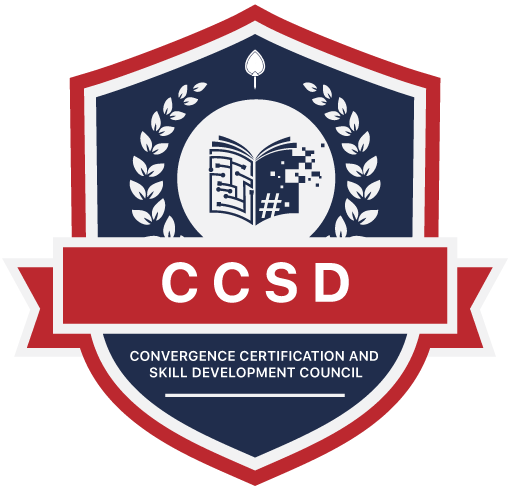Shadow AI Is Already in Your Org: A Practical Playbook for Discovery and Control
TL;DR: “Shadow AI” isn’t a hypothetical. It’s the prompt pasted into a public chatbot, the spreadsheet add-in that autocompletes sales notes, or the intern’s browser extension summarizing HR files. This playbook shows you how to discover unsanctioned AI use fast, triage risk, and enable approved AI with audit-ready controls—without killing productivity.
What Counts as “Shadow AI” (and why it’s sneaky)
Shadow AI is any AI use that bypasses official approval, logging, or controls. It often hides inside tools people already use:
- Public chatbots and image/video tools used with work data
- “AI features” embedded in SaaS (email, CRM, docs, help desk) toggled on by default
- Browser extensions, desktop apps, mobile keyboards with cloud inference
- Unvetted agents, automations, and low-code bots calling LLM APIs
- Personal accounts (vs. SSO) for “just this one task”
- Data copied to prompts: customer PII, code, contracts, financials, health data
Why it matters: data leakage, confidentiality breaches, regulatory non-compliance, IP loss, unverifiable outputs, and vendor lock-in without the right exits.
Step 1 — Find It: A 10-Day Discovery Sprint
You don’t need a perfect inventory to start governing; you need a fast first map. Run these in parallel:
- Network & CASB/DLP: Flag traffic to known AI domains/APIs; extract top tools, volumes, and departments.
- SSO & OAuth review: List apps with “AI,” “assistant,” “copilot,” “chat,” “gen” scopes; sort by highest user count.
- Expense & procurement: Pull 6–12 months for AI vendors/subscriptions and usage-based charges.
- SaaS admin centers (Google/Microsoft/Atlassian/CRM): Export which “AI features” are on, per workspace.
- Endpoint & MDM: Inventory extensions and desktop apps with LLM inference or cloud calls.
- Code & data repos: Search for LLM API keys, endpoints, and prompt templates in code/notes.
- Department surveys (one page): “What AI do you use? For what data? What works/blocks you?” Keep it blameless.
- Security mailbox sweep: Mine tickets/chats for “ChatGPT,” “Claude,” “copilot,” “prompt,” “redact,” “summarize.”
- Legal & privacy logs: Identify prior approvals/DPAs with model providers.
- Incident & leakage review: Look for copy-paste/IP/PII incidents tied to AI tools.
Deliverable (day 10): a simple spreadsheet—Tool, Owner/Team, Use Case, Data Types, Volume, Account Type (SSO/Personal), Known Risks.
Step 2 — Triage Risk with a Simple Scoring Model
Score each use on three axes (1–3 each). Keep it simple and auditable.
- Data Sensitivity: 1 = public, 2 = internal, 3 = confidential/regulated (PII/PHI/finance/code)
- Autonomy: 1 = suggestions only, 2 = human-in-the-loop actions, 3 = autonomous actions or commits
- External Exposure: 1 = on-prem/private VPC, 2 = vendor with strong controls & DPA, 3 = public model/unknown storage
Risk tier = sum:
| Score | Tier | Example | Required action |
|---|---|---|---|
| 3–4 | Low | Drafting blog outlines with public info | Allow via approved tools |
| 5–6 | Medium | Summarizing internal docs with vendor API & HITL | Allow with guardrails & logging |
| 7–9 | High | PII/contracts/code into public chatbots; auto-actions | Block/replace; fast-track approved path |
Step 3 — Contain & Enable: The Minimum Viable Guardrail Stack
People & Policy
- AI Acceptable Use (one page): what data can/can’t be used; when to escalate; no personal accounts.
- Human-in-the-Loop (HITL): irreversible actions require approval; drafts must be reviewed in regulated processes.
- Disclosure: mark AI-assisted outputs where required; keep “explainability on request.”
Process
- Use-Case Intake: 10-minute form—goal, data, model, tools, outputs, measures, fallback.
- Change Management: version prompts, models, and policies as code; review diffs.
- Red Teaming (lightweight): prompt-injection, data exfiltration, policy bypass tests before go-live.
Technology
- Egress control: Route AI traffic via an approved gateway (SSO, RBAC, logging, DLP, domain allowlist).
- Data minimization: redact PII/secrets; field-level filters by role; “need-to-see” contexts only.
- Model routing: default to small/private models; escalate to larger/public ones when policy allows.
- Content controls: toxicity/PII detectors; block policy-violating outputs; watermark generated media where feasible.
- Traceability: store prompts, contexts, tool calls, outputs, approver IDs, and citations for audit.
Step 4 — Contracts & Third-Party Risk (Five Clauses You Need)
- Data residency & deletion: no training on your data, no retention beyond processing; verified deletion on request.
- Private inference: VPC/tenant isolation or dedicated endpoint; no cross-tenant leakage.
- Security controls: SOC 2/ISO 27001, encryption in transit/at rest, key management, breach notification windows.
- Model transparency: model versioning, change logs, incident reporting; right to audit independent assessments.
- Exit & portability: export of prompts, logs, fine-tunes, and embeddings in standard formats.
Add processing purposes, sub-processors list, and acceptable use mirrors of your policy.
Step 5 — Operating Model (Who Does What)
- Business Owner: defines the use case, accepts residual risk, tracks value.
- AI Product Owner: builds runbooks, prompts, evals; keeps the catalog current.
- Security (CISO): egress/DLP/policies; red team; incident response.
- Privacy/Legal: DPIAs, DPAs, retention; vendor terms.
- Data Steward: classification, minimization, masking.
- IT/Platform: gateways, routing, monitoring, access.
- Audit/Risk: control testing, evidence, and quarterly reviews.
Create a RACI for intake, change, incident, and decommission.
Step 6 — 30/60/90 Plan
Days 0–30: Find & Freeze Risk
- Run the 10-day discovery; publish a blameless memo acknowledging positive intent.
- Block high-risk paths (public chatbots for regulated data) and provide approved alternatives immediately.
- Ship the one-page AI AUP and the intake form.
- Stand up the AI gateway for SSO, logging, and domain allowlists.
Days 31–60: Govern & Prove Value
- Approve 3–5 common use cases (summarization, ticket drafts, meeting notes) through intake + HITL.
- Implement model routing (small/private default; escalate when needed).
- Launch lightweight red teaming and golden-test sets for those use cases.
- Start quarterly training: prompt hygiene, redaction, HITL sign-off.
Days 61–90: Scale & Industrialize
- Publish the AI Use-Case Catalog (owner, data, controls, KPIs).
- Add automatic PII redaction and secrets scanning to the gateway.
- Embed approval workflows in the tools (e.g., “Approve & Send”).
- Contract reviews for top vendors; lock in DPAs and exit clauses.
- Schedule quarterly control testing and report to the risk committee.
What to Measure (So You Can Show Control)
- Shadow-to-sanctioned shift: % of AI traffic through approved gateway (target: >80% in 90 days).
- High-risk blocks: number of blocked public-model calls with sensitive data (should trend down).
- HITL adherence: % irreversible actions with documented approval.
- Red-team findings: issues discovered vs. remediated time.
- Incident rate: AI-related data leaks or policy violations.
- ROI proxies: time saved per approved use case; edit distance on AI drafts.
- Training coverage: % of staff completing AI AUP & prompt-hygiene training.
Practical Templates (grab-and-go language)
AUP snippet
Do not input confidential, regulated, or customer-identifiable data into AI tools unless the tool appears in the Approved Catalog and you are signed in via SSO. Irreversible actions require human approval. All AI-assisted outputs remain subject to review.
Intake questions (10 minutes)
- Goal & business owner
- Data classes involved (public/internal/confidential/regulated)
- Model(s)/vendor(s) and where inference runs
- Tools/APIs the agent will call
- Review/approval steps (HITL)
- Metrics for success (time saved, quality, risk reduction)
- Rollback if the model fails
Common Pitfalls (and how to dodge them)
- Banning everything → drives more Shadow AI. Fix: provide safe defaults quickly.
- One giant policy doc → nobody reads it. Fix: a one-pager + job-specific quick cards.
- No logs → no audit. Fix: force egress through a gateway from day one.
- Unbounded prompts → data sprawl. Fix: redaction + role-based contexts + template prompts.
- Treating AI as “just another app” → hidden changes. Fix: version prompts/models/policies like code.
The Bottom Line
You can’t eliminate Shadow AI by decree—you outcompete it with safer, faster, sanctioned paths. Run a 10-day discovery, triage with a simple score, stand up a minimum guardrail stack, and publish a living catalog of approved uses. Do this, and you’ll move from fear to governed velocity: the organization gets the benefits of AI, and you keep evidence that it’s under control.
Want this turned into a one-page AUP, an intake form, and a gateway allowlist you can deploy this week? Say the word and I’ll draft them in your format.





